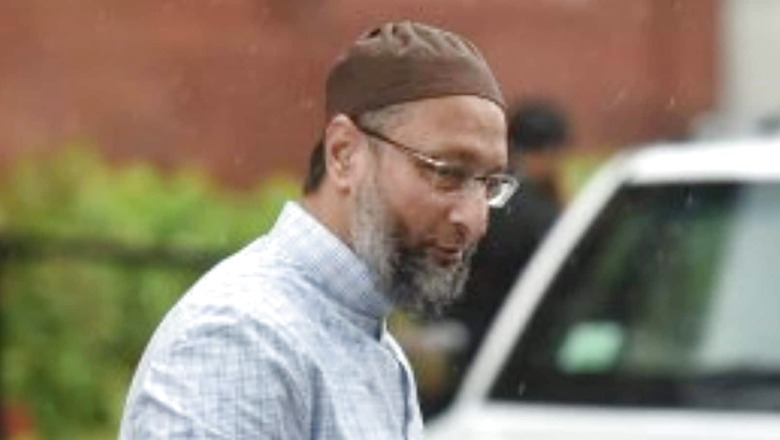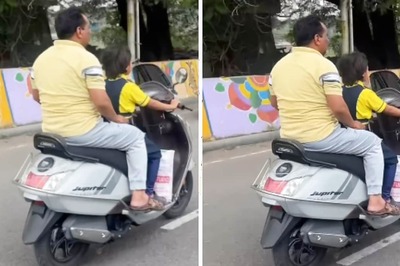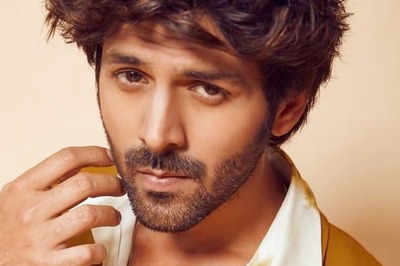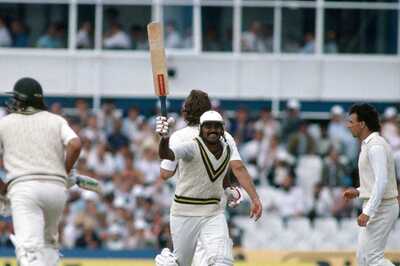
views
The alliance between the Samajwadi Party (SP) and the Suheldev Bharatiya Samaj Party (SBSP) announced on October 20, following a meeting between SP and SBSP heads Akhilesh Yadav and Om Prakash Rajbhar, signifies the start of a realignment of social dynamics influencing electoral politics in Uttar Pradesh.
The potential of this tie-up will be put to test in east and central UP where the SBSP, together with the parties that sought shelter under the umbrella of its offshoot, the Bhagidari Sankalp Morcha or BSM, cultivated a base among the most and extremely backward castes (MBCs and EBCs), seeking to forge their identity without the dominant backward castes breathing down their necks.
It will be more of a trial for the Samajwadi Party whose politics revolved around the domination of the Yadavs in the OBC hierarchy for years on end because for the first time, the Yadavs will have to share the space for power with the deprived castes who meant nothing to them. To that extent, it’s a bold experiment that Akhilesh Yadav has embarked upon.
ALSO READ | UP Next: Muslims Not a Homogeneous Bloc and Why a Section of Them Will Vote for BJP
The Challenge for Akhilesh Yadav
The Bhagidari Sankalp Morcha’s slogan, borrowed from the Bahujan Samaj Party (BSP) of yesteryears, is “Jiski jitni sankhya bhaari, uski utni bhagidari”, encapsulating the reality and spirit of proportional representation in power politics and its structures. This was denied to the MBCs and EBCs in the post-Mandal era because backward castes such as the Yadavs, Kurmis and Lodh-Rajputs, who were empowered largely by the economic spin-offs from land redistribution, were best placed to take advantage of reservation in educational institutions and jobs. The MBCs and EBCs worked as farm hands. Those who owned land did only subsistence farming, enough to keep body and soul together.
The journey of the BSM’s architect, Om Prakash Rajbhar, embodies the political trajectory of the disadvantaged backward castes. Rajbhar was once with the BSP but left to protest Mayawati’s functioning. He floated the SBSP before the 2017 polls and made common cause with the BJP on an ideological plank. The SBSP was named after Suheldev, an eleventh century ruler of Shravasti, near present-day Bahraich. Suheldev is believed to have vanquished an invader, Ghazi Saiyyad Salar Masud, and was venerated as a hero by the Rajbhars. To the BJP, Suheldev epitomised “Hindu nationalism” because he was a Raja who trounced a Badshah. The BJP-SBSP partnership enabled the former to enlarge the circumference of its influence in east UP, beyond Varanasi and Gorakhpur.
The alliance came apart before the 2019 Lok Sabha polls. Rajbhar alleged that the Yogi Adityanath government was unwilling to carry out the proposals of a panel, set up in 2018 by Akhilesh Yadav, to review the classification of UP’s backward castes. In a nutshell, the panel tangentially recommended squaring off the rights and benefits of reservation and leveling the playing field for the MBCs and EBCs.
Unofficially, it is learnt that Akhilesh agreed to implement the recommendations of the Raghvendra Kumar panel report which categorised the backward castes into Other Backward Classes, More Backward Classes and Most Backward Classes and suggested the 27 per cent reservation quota be divided “equitably”.
The SBSP-SP alliance might doubtless have stirred the pot of alphabet soup brewing in UP but it represents more of a challenge to Akhilesh who will have to work hard at attaining equanimity between the Yadavs and the MBCs and EBCs. It complicates the process of seat-sharing because Akhilesh will have to contend with two big blocks: the SBSP and Jayant Chaudhary’s Rashtriya Lok Dal (RLD) and oversee what could be a protracted exercise involving tying up loose ends.
ALSO READ | With Mayawati Missing in Action, It is Crunch Time for Dalit Politics in Uttar Pradesh
The Impact on Owaisi and AIMIM
The alliance has another significant aspect and that is the fate it spells for Asaduddin Owaisi’s All India Majlis-e-Ittehadul Muslimeen (AIMIM). Owaisi was looking to make the kind of breakthrough he achieved in the Bihar Assembly polls where his party won five seats for the first time. However, it is a measure of a realistic assessment of his own strength and that of UP’s ground realities that Owaisi chose to be part of Rajbhar’s front rather than go solo from the start.
Owaisi went hammer and tongs at the SP in the joust to get the Muslim votes. A general perception was that Akhilesh was on the back foot on minority-related issues for fear of losing his Hindu votes, including those of the Yadavs. The BJP had managed to pare down the SP’s share of Yadav votes in the elections held since 2014. When senior SP leader Azam Khan—who holds sway over the minority votes in large parts of west UP and Rohilkhand—and his family were arrested and imprisoned on various charges including land grab, Akhilesh didn’t speak up for them until he was nudged to.
Owaisi had hoped to capitalise on the minority “discomfort” with the SP and take away the community’s votes in the seats where these mattered. He saw the UP elections as an opportunity to widen the AIMIM’s footprint in the heartland.
In Uttar Pradesh, “Muslim” parties never secured a foothold because in the post-Congress era, after the 1989 elections drew the equator line between religious communities, the minorities rallied around the party or coalition best positioned to defeat the BJP. In UP’s case, it was almost always the SP barring 2007 when Muslims voted for the BSP and the 2009 Lok Sabha polls, when they rooted for the Congress. In the 2017 Assembly election, the AIMIM on its own fought on 38 seats, won nothing and secured a vote share of 0.24 per cent.
Owaisi will have to swallow his pride and co-exist with the SBSP-SP coalition or fight solo and be back at square one. In the impending elections, Muslims will likely resort to a tactic they have used since the 1993 Assembly elections: strategic voting and go for the party they believe is poised to trounce the BJP than waste their votes on a “loser”.
Radhika Ramaseshan is a senior journalist. She was the political editor at The Telegraph. The views expressed in this article are those of the author and do not represent the stand of this publication.
Read all the Latest News , Breaking News and IPL 2022 Live Updates here.




















Comments
0 comment